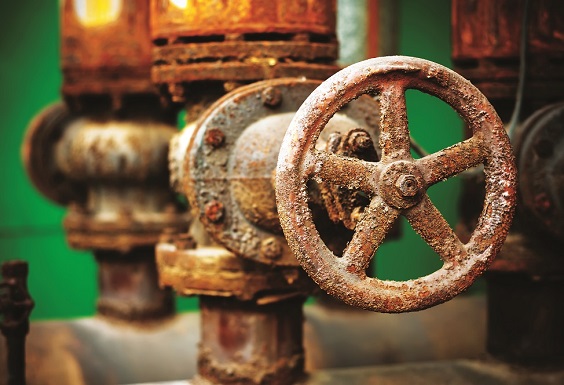Given that cooling towers play a critical role in process cooling in HVAC applications, it helps to be aware of the pitfalls one could encounter. We collate the most important ones for easy reference…
It is an axiom that the efficiency of a process cooling system is as good as the cooling tower and its components. A cooling tower impacts the overall functioning of process cooling, just as several factors impede the smooth running of a cooling tower. “In the food industry, where a cooling tower supports critical food processing machinery, the HVAC system as well as refrigerators and freezers, the loss of even part of the cooling power can cause extensive losses of frozen products, produce or other perishable products,” warns Ed Sullivan.¹
CHALLENGES
Ambient heat:
One of the biggest challenges that reduce the cooling capacity of a cooling tower is high ambient temperature. This is even more acute in the Middle East region, where the mercury soars in summer months, putting a severe strain on the equipment and, thereby, the processes.
The build-up of sediments and debris through fouling poses operational challenges, inhibits heat transfer, impedes the flow of water and increases the use of cooling water
In this regard, Sullivan cites Tom Ryder, a cooling tower customer support specialist: “Even if the downstream equipment is not impacted directly by hot weather, the cooling tower is,” explains Ryder. “Therefore, unless the cooling tower is well maintained, the water it provides devices, such as heat exchangers, production machinery and HVAC systems, will be less able to draw off heat. For example, the ‘cold side’ of a heat exchanger will receive water that is not as cool as optimum. Therefore, the heat exchanger will be less able to draw off heat from process fluids.”¹
Contaminants:
Water is used in process cooling systems as a medium to transfer heat and, sometimes, also as the final point of heat rejection into the atmosphere. A typical water-cooled system is, therefore, prone to contaminants like scaling, fouling, corrosion, dust and microbiological activity. This is true even when potable water is used. Any one of the contaminants singly, or in combination, could affect the efficiency of the system, thereby leading to:
• Compromising the quality of water
• Increased water usage
• Increase in operation and maintenance costs
• Unscheduled downtime
• Reduced capacity
• Frequent replacement of parts
• Reduced longevity of the system
Apart from these, more significantly, it could pose a health hazard to those who come in contact with the water/system. Let us address these one by one:
Scaling
Scaling is the deposition of salts and other mineral particles present in water. The deposits range from thin, tightly adherent films to thick, gelatinous masses, depending on the material deposited and the mechanism causing the deposition.
Scale deposits are typically formed by precipitation and crystal growth on surfaces in contact with water, such as heat exchangers and pipelines.
“Precipitation occurs when solubilities are exceeded either in the bulk water or at the surface. The most common scale-forming salts that deposit on heat transfer surfaces are those that exhibit retrograde solubility with temperature.”²
The build-up of sediments and debris through fouling poses operational challenges, inhibits heat transfer, impedes the flow of water and increases the use of cooling water
Generally, mineral deposits become less soluble with increase in temperature, which happens when cooling water systems absorb heat from the processes they are cooling. “As the water is cooled through evaporation, the concentration of all the dissolved solids in the remaining re-circulating water, including calcium carbonate increases. Left unchecked, calcium carbonate will precipitate as sludge in the cooling tower and as a deposit in the heat exchanger.”³
Needless to say, scaling takes a toll on energy efficiency, hampers production and causes a possible system shutdown. “This can cost millions of dollars in process cooling,” says Peter Tracey, an expert on the subject.4
Jean-Marc Marchand of Stellar Energy underscores this: “Scaling up of heat transfer surfaces impedes performance of the system and shortens the life of the equipment. This also increases the consumption of water and energy, which is incongruous to the environmental and economic benefits of free and partial free cooling.”5
In addition, the deposits cause oxygen differential cells to form. These cells accelerate corrosion and lead to process equipment failure.
Corrosion
 Corrosion is defined as “the destruction or loss of metal through chemical or electrochemical reaction with its surrounding environment.”6 Simply put, free oxygen in the water passes over a metal surface and reacts with it, causing corrosion of the metal.
Corrosion is defined as “the destruction or loss of metal through chemical or electrochemical reaction with its surrounding environment.”6 Simply put, free oxygen in the water passes over a metal surface and reacts with it, causing corrosion of the metal.
Corrosion in cooling water systems can occur for several reasons. A few of them are:
• Constant aeration of water, leading to fresh supply of oxygen
• Chemicals used to prevent scaling by controlling pH being overfed
• Anaerobic bacteria flourishing under deposits and in stagnant areas of the system causing severe localised corrosion and pitting.7
Corrosion needs to be controlled, because metal once lost, cannot be replaced, and leads to premature loss of plant assets. It could also cause fouling.
Fouling
Fouling is also a form of deposition but of suspended matter. Foulants enter a cooling system through makeup water as particulate matter, airborne contaminants, process leaks and, as stated earlier, through corrosion.
 Both iron and aluminum are particularly harmful, because they can act as coagulants. Process leaks introduce a variety of contaminants that accelerate deposition and corrosion.²
Both iron and aluminum are particularly harmful, because they can act as coagulants. Process leaks introduce a variety of contaminants that accelerate deposition and corrosion.²
Airborne contaminants usually consist of clay and dirt and dust particles but can include gases, such as hydrogen sulphide, which form insoluble precipitates with many metal ions.
“In this region, we experience a lot of environmental dust, which is scrubbed from the air by the action of cooling towers,” warns Tracey. “The effects of this are similar to scaling, and often, the two phenomena are confused.”4
The build-up of sediments and debris through fouling poses operational challenges, inhibits heat transfer, impedes the flow of water and increases the use of cooling water.
The control of fouling by preventing agglomeration is one of the most fundamental aspects of deposition control, believe experts. In addition, proper planning at the design stage can minimise the negative effects of fouling.
Microbiological activity
Cooling water systems, unfortunately form ideal breeding grounds for microbiological activity, as the temperature is conducive to their growth. Coupled with this is the fact that contaminants contained in the air enter the system when the air is drawn in, resulting in unwanted growth, such as algae, slime, fungus and Legionella. In a nutshell, elevated temperatures and contaminants encourage microbiological activity – another challenge we need to be mindful of in the region.
Microbial organisms, once they enter the system, form colonies at places where there is low water velocity, and are particularly difficult to eliminate.
Apart from causing loss of heat transfer, plugging nozzles and strainers, they are potential health hazards. Because of their rapid and persistent growth, combatting biological fouling needs to be addressed differently than scaling and corrosion. The control of Legionella, in particular, is important, as it could cause Legionnaires’ disease to those who work or live in its proximity, and could even prove to be fatal.
CONCLUSION
It needs to be remembered that the challenges of scaling, fouling, corrosion and microbiological activity are inter- related and a multi-pronged approach is needed to overcome them. The treatment regimen, therefore, needs to be a judicious combination of the right kind of equipment, chemical treatment and constant vigilance.
In this context, Tracey points to another dimension – increasing environmental demands. “The use of chemicals as scale and corrosion inhibitors as well as biocides are typically being squeezed,” he says, “by tighter environmental legislation. Leading water treatment companies, are therefore, constantly upgrading their chemical products to meet new legislation.”4
This, in itself, is proving to be yet another challenge to contend with, for the process cooling industry.
Above, all, preventive maintenance of cooling towers and timely replacement of equipment can keep process cooling in fine fettle, as also those who work in their proximity.
References:
(The writer is the Associate Editor of Climate Control Middle East.)
Copyright © 2006-2025 - CPI Industry. All rights reserved.